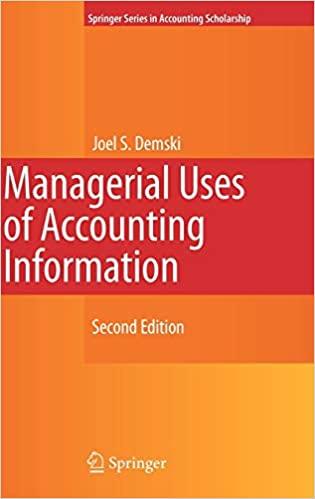21. inconsistent framing attempt Ralph manages a two product enterprise. The first (q1) sells for 400 per
Question:
21. inconsistent framing attempt Ralph manages a two product enterprise. The first (q1) sells for 400 per unit and the second (q2) sells for 600 per unit. Estimated unit costs are as follows:
q1 q2 direct labor 80 120 direct material 100 150 overhead 160 240 Overhead is applied to each product on the basis of direct labor dollars
(at a rate of 200%), while the overhead LLA is given by OV = 54, 000 + .5DL$
where DL$ denotes direct labor dollars. In addition, marketing costs are described by MKT = 30q1 + 90q2 The firm employs two production departments. The first has a capacity of 400 direct labor hours and the second a capacity of 500 direct labor hours. The first product uses one hour in each department, while the second uses one hour in the first department and two hours in the second, so we must observe q1 + q2 ≤ 400 q1 + 2q2 ≤ 500
(a) Determine an optimal output schedule for Ralph.
(b) Ralph is worried about the overhead function in the above problem.
To think some more about this, assume actual overhead is one of the following two models, with equal probability: OV =
63, 000 + .25DL$ or OV = 45, 000 + .75DL$. Absent any additional information, Ralph will implement the schedule determined in part
(a) above. How much would Ralph pay for a cost study that would perfectly reveal which of the two overhead models is in fact correct?
(c) Ralph now tries another exercise. Instead of worrying about the overhead estimate, the estimates of available capacity in the two departments are called into question. Suppose department two’s estimate is correct, but the estimate for department one is ambiguous. With equal probability, it will be either 350 or 450 hours. I want to ask you how much Ralph would pay to learn the actual capacity. But this cannot be answered without additional specification. Why can we not answer this question?
What is the framing issue?
Step by Step Answer:






